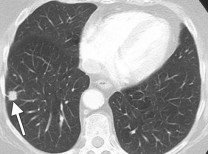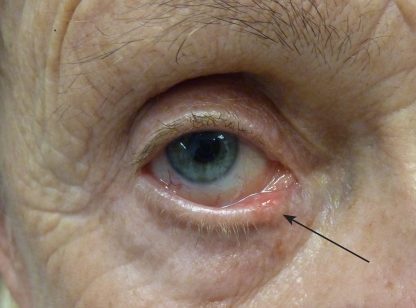Lung cancer is the second most common cancer in the United States. It accounts for approximately one out of every five malignancies in men and one out of nine malignancies in women. The average age at diagnosis is 70 years old. Over the past decade, the overall incidence of lung cancer has decreased due to decades of public education and government policy. Nonetheless, lung cancer remains the most frequent cause of cancer death in this country making up nearly 25 percent of all cancer deaths.

Lung cancer is divided broadly into two major types: non-small cell lung cancer (NSCLC) and small cell lung cancer (SCLC). By far the most commonly diagnosed is NSCLC accounting for nearly 90 percent of lung cancer cases. Treatment for NSCLC is typically multi-modality including some combination of radiation therapy, chemotherapy and surgery. Each case is unique and requires collaboration between a multidisciplinary team of oncologists and surgeons.
Unfortunately, the vast majority of NSCLC cases are diagnosed at a very advanced stage. Only about 15 percent of NSCLC are diagnosed while the disease is still at an early stage. Despite the very serious prognosis of NSCLC, many people with early stage disease can still be cured. The advent of low dose CT scan screening protocols has improved the rate of earlier detection. Surgery remains one of the mainstays of treatment for early stage NSCLC. However, there is also another novel non-invasive approach called stereotactic body radiation therapy (SBRT) that has achieved similar cure rates in many studies.
SBRT is a form of radiation treatment which utilizes many external x-ray beams and aims them to treat a tumor. SBRT has been employed in several types of cancer, but has found particular widespread utility in early stage NSCLC. SBRT differs from conventional radiation therapy in the amount of dose that can be delivered per treatment. With SBRT, physicians are able to deliver a greater dose over the course of fewer treatments. This has resulted in a much higher success rate in comparison to conventional radiation therapy for early stage NSCLC.
SBRT is delivered in a radiation oncology department under the supervision of a team of radiation oncology physicians, radiation therapists and medical physicists. Treatment planning for SBRT begins with diagnostic imaging to locate and determine the tumor to be treated. This planning session involves mapping the target area as it moves during the patient’s breathing cycle. This helps improve beam accuracy during treatment. The radiation oncologist works with medical physicists using advanced computer software to target the tumor while avoiding surrounding normal tissues. Complex software algorithms allow the beams to target a single point in three-dimensional space with millimeter accuracy. Advanced immobilization and tracking techniques help deliver the dose accurately to the target. Modern radiation therapy techniques also allow for safe exposure to normal structures while maximizing therapeutic effect of the radiation dose to the tumor.
Patients with major medical co-morbidities or health problems may not be candidates for surgery. Others may be poor candidates for surgery due to risk of functional deficit. These same patients, however, are often good candidates for SBRT. The recovery time for SBRT is minimal and the risk of functional decline is much smaller. A conventional course of standard radiation therapy typically takes five to eight weeks to complete. By contrast, a course of SBRT is given as one to five treatment sessions over the course of one to two weeks. The nature of the beam targeting in SBRT can make it particularly effective for treating small, well-defined tumors in inoperable or surgically risky locations. The past few decades have produced convincing data from the United States, Europe and Japan demonstrating that SBRT may be the treatment modality of choice for patients for whom surgery may not be an optimal treatment. The side effects vary from patient to patient and should be discussed in detail with the treating radiation oncologist.
Each lung cancer diagnosis is unique and should be discussed individually with an interdisciplinary oncology team. In early stage disease that is amenable to radiation therapy, SBRT should be strongly considered as a viable treatment modality. The side effect profile is very tolerable in a majority of patients. Success rates have been reported as high as 80 to 90 percent in properly selected patients.
Dr. Ling is a board-certified radiation oncologist with 21st Century Oncology based in Palm Desert, Rancho Mirage and Yucca Valley and a member of Desert Doctors. For questions, please contact (760) 200.8777 or visit www.21co.com/location/psc or www.DesertDoctors.org.














































Comments (0)